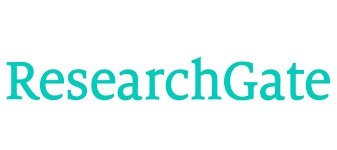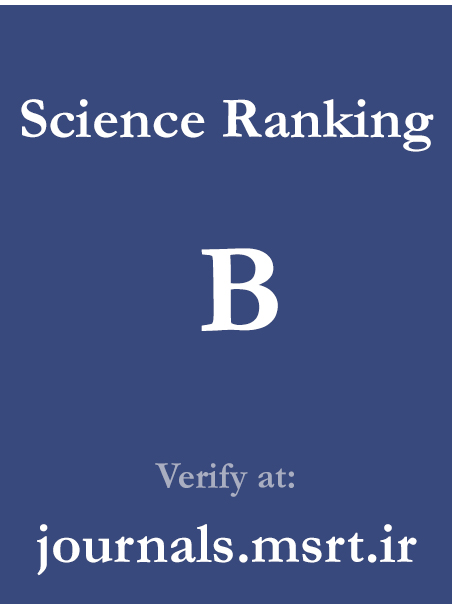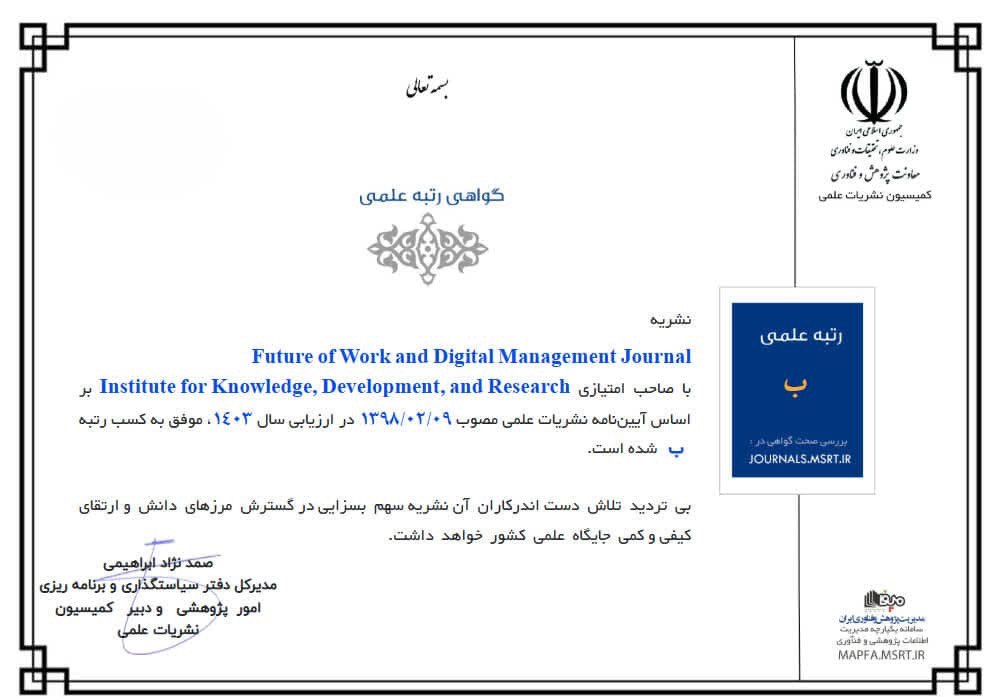Identifying Points of Divergence and Convergence in Organizational Productivity Improvement Factors in the Tax Administration: A Comparative Study between Iran and Selected Developed Countries
Keywords:
Coaching, Managerial Coaching, Sustainable Human Resources, Governmental OrganizationsAbstract
Supportive coaching promotes individual development and organizational effectiveness, emphasizing nurturing and learning. Leading organizations utilize skilled managers not only as successful leaders but also as proactive coaches to enhance productivity and reduce costs. The aim of this study was to design a coaching model for managers of Iranian governmental organizations with a focus on sustainable human resources. This research employed a qualitative methodology, and the participants included faculty members specializing in organizational behavior management and human resource management in higher education institutions, senior managers and experts in human resource management in governmental organizations, and specialists with awareness of the research topic. Using the snowball sampling method, 15 experts were selected. Data collection was conducted through semi-structured interviews. For data analysis, thematic analysis based on the six-phase approach of Clarke and Braun (2006) was used through three stages: initial coding, theme development, and theme refinement, utilizing Atlas.ti software. To ensure validity and reliability, necessary assessments were conducted using Holsti’s coefficient, Scott’s Pi coefficient, Cohen’s Kappa index, and Krippendorff’s Alpha. The level of agreement among experts, calculated via Holsti’s coefficient (observed agreement percentage), was estimated at 0.887; Scott’s Pi index at 0.755; Cohen’s Kappa at 0.725; and Krippendorff’s Alpha at 0.817. Based on the findings, the final model consists of seven main themes: 1) personal and professional characteristics of the coach, 2) coaching process, 3) knowledge-orientation, 4) organizational transformation, 5) technology and equipment, 6) interactivity, and 7) support and resources—comprising 22 sub-themes and 135 indicators.
Downloads
References
[1] M. Gholizadeh, R. Zolfaghari Zafarani, and M. Mohammadian Saravi, "Presenting a human resource development model focusing on productivity in the country's tax administration using the structural equation approach," Journal of Innovation and Value Creation, vol. 19, no. 10, pp. 185-204, 2022. [Online]. Available: http://rimag.ricest.ac.ir/fa/Article/33264.
[2] A. Asadpour Hamzeh, A. Amirkabiri, and M. R. Rabiei Mandjin, "Designing and Explaining a Model Based on Systemic Policymaking (With Emphasis on Almond Model) in the National Iranian Tax Administration," Tax Research, vol. 30, no. 53, pp. 7-44, 2023, doi: 10.52547/taxjournal.30.53.1.
[3] S. Zheng et al., "The ai economist: Improving equality and productivity with ai-driven tax policies," 2020.
[4] F. Serrano Antón, "Artificial intelligence and tax administration: strategy, applications and implications, with special reference to the tax inspection procedure," World Tax Journal, vol. 13, no. 4, pp. 575-608, 2021, doi: 10.59403/bcs8j9.
[5] M. Pires, "Artificial Intelligence (AI) in the field of Tax Administration," Review of International and European Economic Law, vol. 3, no. 5, 2024. [Online]. Available: https://www.rieel.com/index.php/rieel/article/view/90.
[6] M. Mehrkam and Z. Nasimi, "The Impact of Managerial Leadership Styles on Digital Transformation in the National Tax Administration," Smart Business Management Studies, vol. 13, no. 50, pp. 263-297, 2024.
[7] M. Mihan Dost, A. M. Madani, and A. Mohibi, "Examining the factors affecting the development of Islamic organizational citizenship behavior in the National Tax Administration," Behavioral Studies in Management, vol. 31, no. 13, pp. 74-94, 2022. [Online]. Available: https://ensani.ir/fa/article/515914/.
[8] M. Mīhan Dūst, A. Madanī, and S. Mohebī, "Designing a model for the development of Islamic organizational citizenship behavior among employees of the National Tax Administration of Iran using a qualitative approach," 2023. [Online]. Available: https://civilica.com/doc/1853941.
[9] O. A. Adelekan et al., "Evolving tax compliance in the digital era: a comparative analysis of AI-driven models and blockchain technology in US tax administration," Computer Science & IT Research Journal, vol. 5, no. 2, pp. 311-335, 2024, doi: https://doi.org/10.51594/csitrj.v5i2.759.
[10] A. Kochanova, Z. Hasnain, and B. Larson, "Does E-Government Improve Government Capacity? Evidence from Tax Compliance Costs, Tax Revenue, and Public Procurement Competitiveness," The World Bank Economic Review, vol. 34, no. 1, pp. 101-120, 2020, doi: 10.1093/wber/lhx024.
[11] Y. Pang, "Profitable pollution abatement? A worker productivity perspective," Resource and Energy Economics, vol. 52, pp. 33-49, 2018/05/01/ 2018, doi: 10.1016/j.reseneeco.2017.12.003.
[12] O. E. Sowole and M. O. Adekoyejo, "Influence of Value Added Tax on Economic Development (The Nigeria Perspective): Array," The Journal of Accounting and Management, vol. 9, no. 3, 03/16 2020. [Online]. Available: https://dj.univ-danubius.ro/index.php/JAM/article/view/122.
[13] A. Alamtabriz and R. Shayesteh, "Evaluation and Prioritization of Tax Collection Process Outsourcing in the Iranian National Tax Administration by Employing the Fuzzy TOPSIS Approach," (in eng), Journal of Tax Research, Research vol. 19, no. 10, pp. 189-220, 2011. [Online]. Available: http://taxjournal.ir/article-1-103-en.html.
[14] A. A. Sadeghi, M. A. Hosseini, and K. Mohammadi, "Presenting a Managerial Competency Model in the Iranian Tax Administration," Tax Research Journal, vol. 28, no. 47, pp. 51-74, 2020. [Online]. Available: https://taxjournal.ir/browse.php?a_id=1890&sid=1&slc_lang=en.
[15] H. Wang, Y. Zhang, and Z. Li, "Big Data Analytics in Tax Administration: Challenges and Opportunities," Taxation Journal, vol. 8, no. 2, pp. 45-59, 2022. [Online]. Available: https://www.researchgate.net/publication/335231515_Big_Data_Analytics_for_Tax_Administration.
Downloads
Published
Submitted
Revised
Accepted
Issue
Section
License
Copyright (c) 2025 Khalil Esmaeilzadeh, Farhad Nejad Haji Ali Irani, Yousef Beigzadeh, Jafar Beikzad (Author)

This work is licensed under a Creative Commons Attribution-NonCommercial 4.0 International License.








